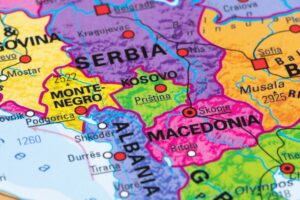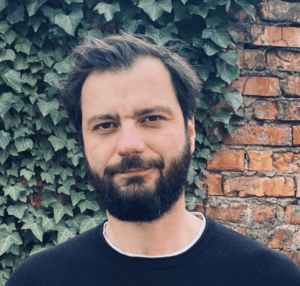Montenegro’s Media Maze: Tackling the Three-Headed Monster in a Small Size Arena
Brano Mandić
Like other countries in the Western Balkans, Montenegro has experienced a surplus of history and politics in the last three decades, more than what a small state can bear. However, this excess has boosted the country, which became independent in 2006 and a NATO member a few years later. These processes were turbulent points of ideological conflict that kept Montenegro’s politics in a state of perpetual election campaigns, turning the media mostly into service points for political parties’ agendas.
The central division between the pro-West independence political bloc and the pro-Serbian (read: pro-Russian) side defeated in the referendum is a simplified image visible from the outside. Within this struggle, secret deals, changes of sides, and everything else politics brings about have developed. The Montenegrin media followed the process, often failing to realise their role as regulators and social correctors. The old journalistic “follow the money” method was not fully respected; instead, the media often depended on the money they should have investigated. As a result, the two political blocs got favourable media outlets, usually funded with the blessing of political players.
Montenegro’s economy lacks any significant productive force, and the state’s survival, with around 600,000 inhabitants, mainly depends on tourism. Money was flowing into the country through political channels rather than through economic development. During the 1990s, a significant amount of money flowed into Montenegro through cigarette smuggling, which turned the country into a grey zone for tobacco transit. In the 2000s, the influx of money came from Russian capital. In the 2010s, a Chinese billion-dollar loan was used for a suspect road construction project. The latest significant amount of indebtedness came from the American Stock Exchange a few years ago.
This somewhat extended introduction is necessary to understand how challenging it was to deal with journalistic ethics in a country that still struggles to complete its transition, stuck in an almost Cold War-like division of interests between the East and the West. Any minor political instability (and there have been dozens in the past three decades) would push media professionalisation three steps backward. Politics intervened whenever the profession rallied around principles and codes of ethics, or when it initiated dignified production. The small country lacks strong guild associations; the same goes for journalism. In the sectarian battle over bones, any talk of a possible united spirit and approach by Montenegrin journalists would end.
During the rule of Montenegro’s strongman Milo Đukanović, when state agencies refused to allocate frequencies to corporation-owned television, the rest of the media watched in silence as the major daily newspaper “Vijesti” had their journalists’ cars set on fire and buildings of other newspapers were bombed. The three-decade-long Đukanović’s era has ended, and pressures have become more insidious and less obvious, which is good, but it still hampers everyday work.
The role of public service television in such a small country is crucial, but its transformation from a governing party-centred to an open media outlet is progressing too slowly. The media centre barely exists, while phantom portals serve entire networks of disinformation. The new reality slowly erodes what a few mainstream media outlets try to establish as a practice. Far from being perfect, several mainstream media outlets become the only defence against the growing influence of fake news, amateurish websites, or simply paid campaigns that secret centres of power undertake through social networks and ad hoc web portals.
A certain democratisation of public discourse occurred in recent years, but it also produced rotten fruits. The spectre of revived Serbian nationalism once again haunts liberals, intellectuals, and free thinkers. Above all, Serbian-owned capital surged in, sensing the weakness of the new government, elected on the wings of Serbian-religious nationalism.

Michele Ursi / Shutterstock.com
Most media in Montenegro are currently under the ownership and command of companies from a foreign country. To the concern of some media experts, three of four broadcasters with national frequencies in Montenegro are controlled by Serbian media groups. Since Serbia and Montenegro speak the same language and considering Montenegro has historically suffered a certain provincial complex, half of the job has already been done. The only thing that remains to be done is for part of the Serbian media scene to move to Montenegro through both official and unofficial media channels, social networks, and corporate trades.
The program content offered in this way is openly nationalistic and sensationalist and promotes violence, trash music and pan-Slavic hysteria that seems to come under direct command from Moscow. Some Serbian private television stations are indirectly connected to the murky circles around Serbian Prime Minister Aleksandar Vučić, who has implemented a media takeover in his country not seen even during the time of Slobodan Milošević.
Where does Montenegro fit into all this? How will the media respond to the challenges of the complex political situation in the Balkans, but also to the technological revolution which brings new challenges and reshapes the world media environment?
Old narratives are becoming insufficient in Montenegro, and the media are struggling to modernise to exert their influence within social networks. Sensationalism is the common denominator for all those trying to survive in such a small market as Montenegro. A weak market in a small society can be advantageous, as tabloid content struggles to break through strong and entrenched patriarchal codes. In terms of respecting human dignity in the media, the old codes have an important regulatory role, even if they are outdated in other aspects of life. Perhaps these codes make the Montenegrin media look more sophisticated compared to the larger Serbian media scene, which is often characterised by its unruly and bizarre nationalistic narrative.
The Montenegrin media may be among the least creative in Europe, but there is still a group of dedicated journalists who bravely and skilfully do this ever-changing job. No one knows what the new generations of Montenegrin journalists will look like, recruited from the generations who do not remember the old analog days. What is certain is that the challenges that every journalistic community in the world faces in these years appear in Montenegro with triple strength.
To sum up and paint this three-headed monster that hovers over Montenegrin colleagues: the scarcity of quality professional media workers, the malignant influence of larger political centres, and the information backwardness of mainstream professionals mean that various low-quality media content spreads its influence faster. On these three fronts, we must persistently fight and work without surrender, even with little hope of great success.
Brano Mandić

This UNESCO project, supported by the European Union (EU), is aimed at fostering media ethics, rights-based regulation of digital platforms and online media, as well as adopting Media and Information Literacy (MIL) policies and integrating them into formal education. As one of the partners in the Building Trust in Media in South-East Europe: Support to Journalism as a Public Good project, the Ethical Journalism Network is working on strengthening media accountability and transparency through sustainable self-regulation mechanisms. For more information on the resources and about the media who have completed the ethical audits, please click here.
#TrustinMediaSEE
Main image: Podgorica, Montenegro – Sept 01, 2018: Radio frequency spectrum control tower on Dajbabska Gora (Dajbabe hill) at sunset. Credit: Predrag Jankovic/Shutterstock